A friend who is keen to start photographing birds recently asked me what I do with all my images. After showing him my Instagram profile (which he is dutifully following – thank you, Mark!) I couldn’t help wondering if the time it takes to share images daily is worth it. I have nearly 900 followers, but each image on my feed only gets around 20-30 likes, on average. I also have my website (and this blog), but I don’t post every image I capture here and – most of the time – the website galleries remain woefully out-of-date. Occasionally, I print my photos on cards or calendars – but only for family and friends – and I enter a few competitions.
So, in summary, not many people get to see my images. But I’ve always thought that I don’t take wildlife photos for others. I take them for me – for the challenge and as a souvenir of each wildlife encounter. The only reason I share them is to stop them from gathering digital dust on a hard drive somewhere and to satisfy the loftier (although probably daft) ambition that I might inspire people to care more for the natural world. If I can make one person give gulls a second and more sympathetic look, for example, I will feel successful. Recently, however, what I do with my images has meant taking an even closer look.
Let me take you back a couple of years when I first started photographing the roe deer on my local patch. I had the misconception that all roe deer pretty much looked the same. There were obvious differences between males and females – especially when the bucks had their antlers. But apart from those differences, I assumed they appeared – and acted – very much alike. Once I started to spend time with the deer, I realised that not only did they all have different personalities, but they also had distinctive features. I’m not talking about the shape of their antlers or even specific markings, but – more surprisingly for me – they had different face and body shapes, and these seemed to run in the family.
At first, the individuals were easy to spot. There was Hellboy, with his short, devil horn antlers and delicate features. Quint was the big, old buck with the squinty jaw. Blue was the older-looking doe with the soft, kindly face, while Red was the younger female with the slighter build, large eyes and long ears. So far, so simple. Then both Blue and Red had twins, Chewie the buck appeared, and identification became more of a challenge.
And that’s where the photographs come in. I’ve taken a lot of images of the local deer – some may say too many – and this means that I have an extensive collection of deer portraits to refer to. Below, you can see how I’ve pulled these together to identify the individuals I photograph. I hope to use this information to chart their progress and build my understanding of their behaviours as the younger individuals mature and, hopefully, create the next generation of my local roe deer.
Hellboy
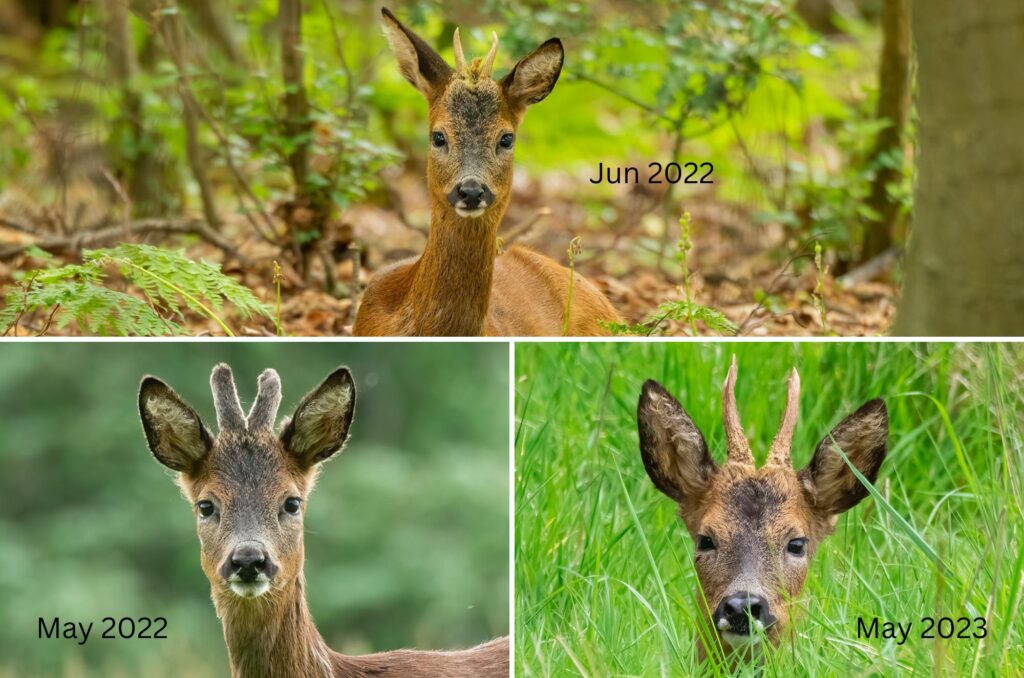
Hellboy’s distinguishing features:
- Slight build
- ‘Dished’ face with delicate features
- Small antlers – devil horns
- Chilled personality
Quint
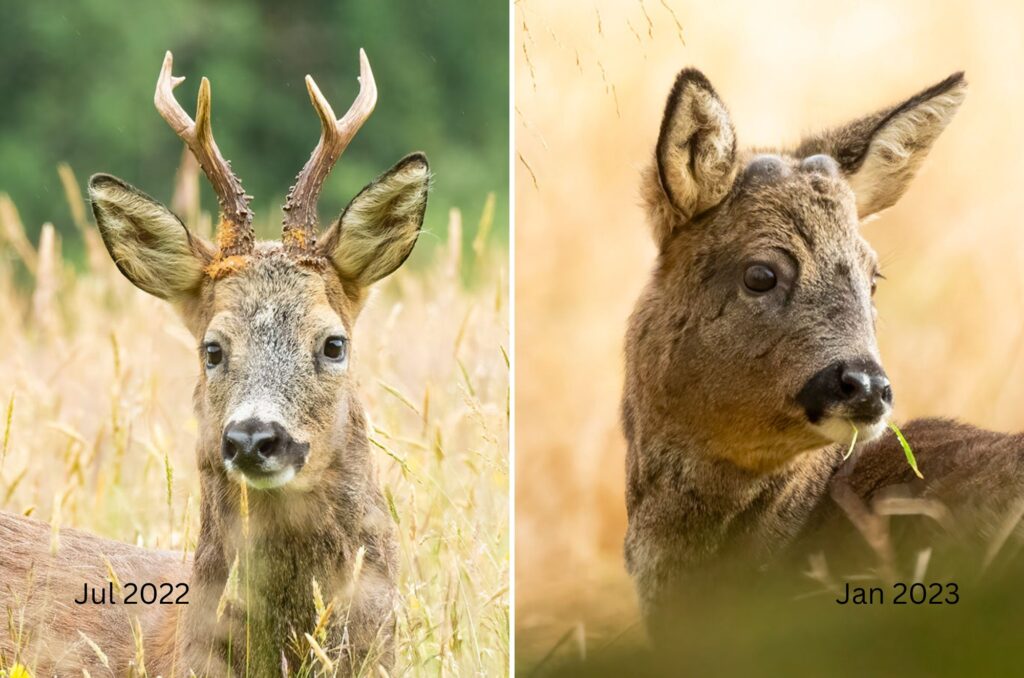
Quint’s distinguishing features:
- Large build (as the dominant buck) when I first met him, although he lost some condition due to his age
- Lower jaw shifted slightly to the left and missing teeth
- Large, wide antlers
- Tolerant personality
Chewie
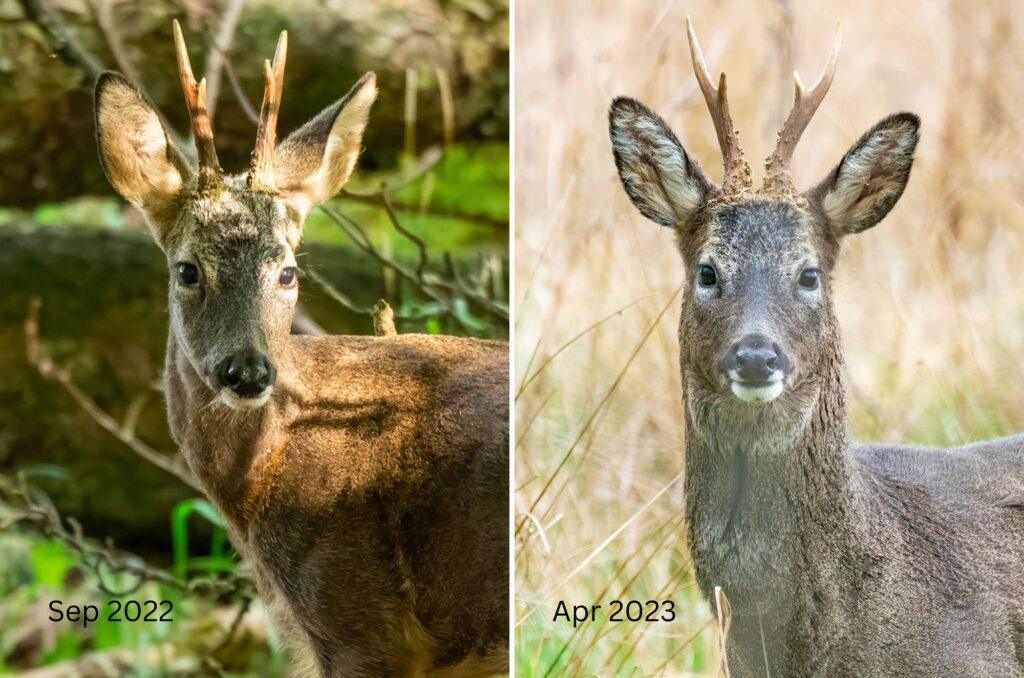
Chewie’s distinguishing features:
- Pointed face shape, almost mouse-like
- Strong build
- Straight antlers
- Confident personality
Blue
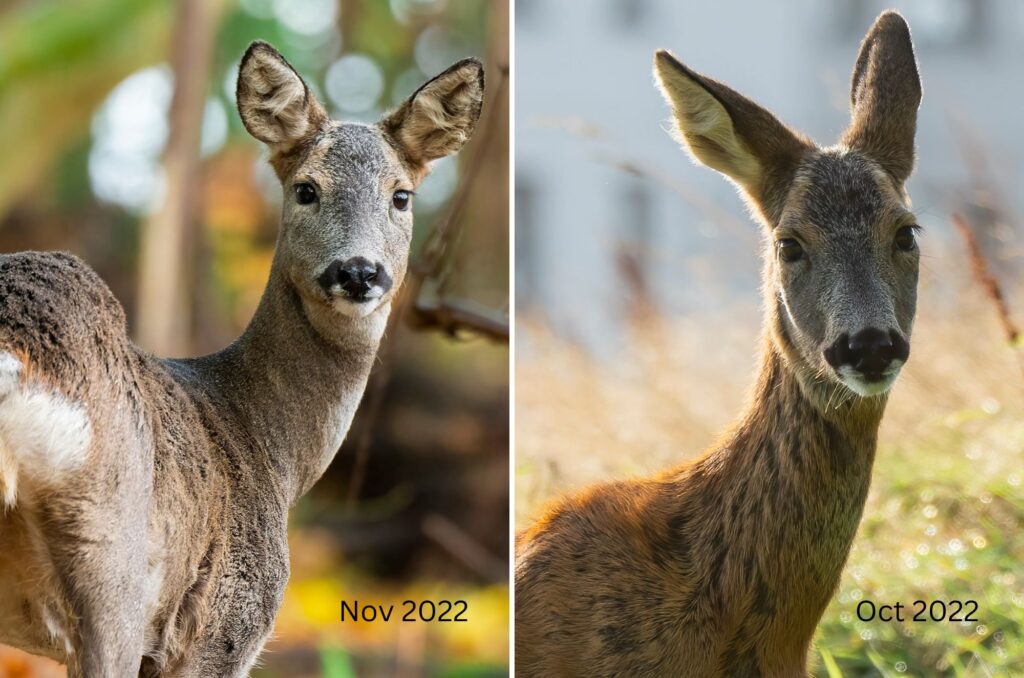
Blue’s distinguishing features:
- Soft, kindly face with black markings stopping in a straight line at her lower jaw
- Older appearance
- Tolerant personality
- Mother of Beta and Gamma
Red
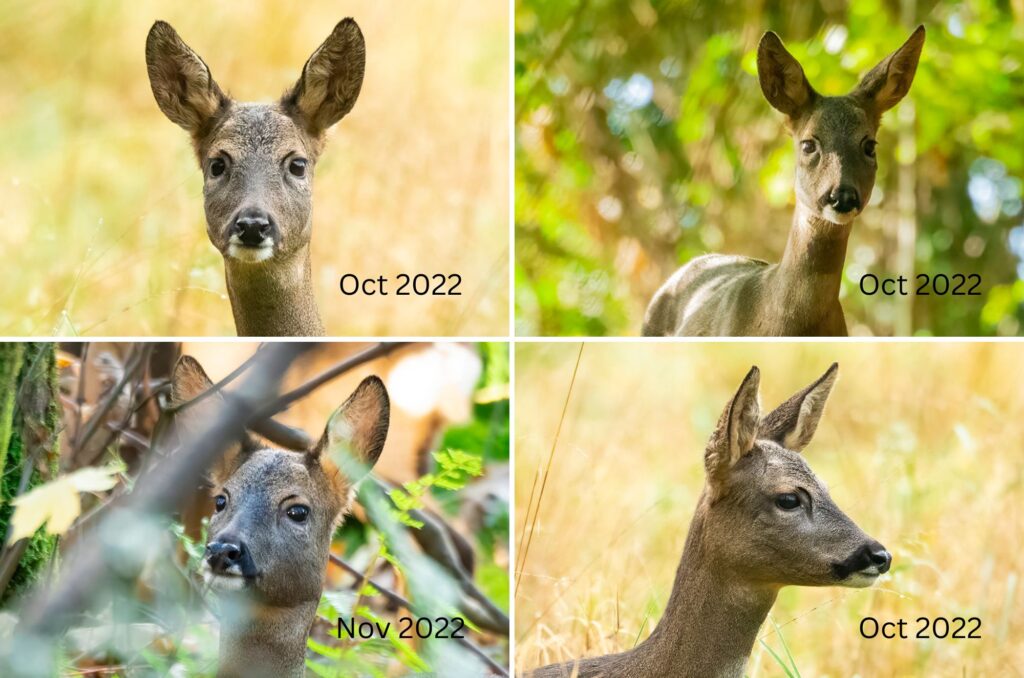
Red’s distinguishing features:
- Younger appearance
- Longer-looking face with black markings running onto her lower jaw. Large-looking eyes and long ears
- Slight build
- Watchful personality, it took longer to build her trust
- Mother of Russet and Ruby
Russet
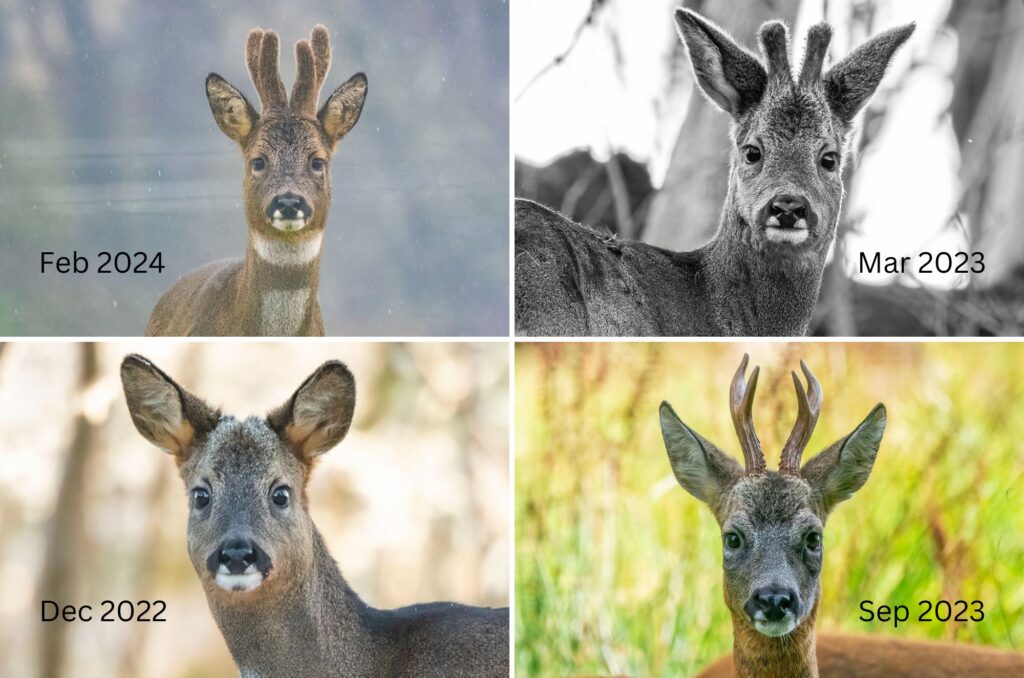
Russet’s distinguishing features:
- Athletic build
- Handsome, square-shaped face with strong features and a somewhat pinched-looking nose, as though nostrils are always slightly flared
- Thick antlers
- Watchful personality
- Son of Red – born in 2022
Ruby
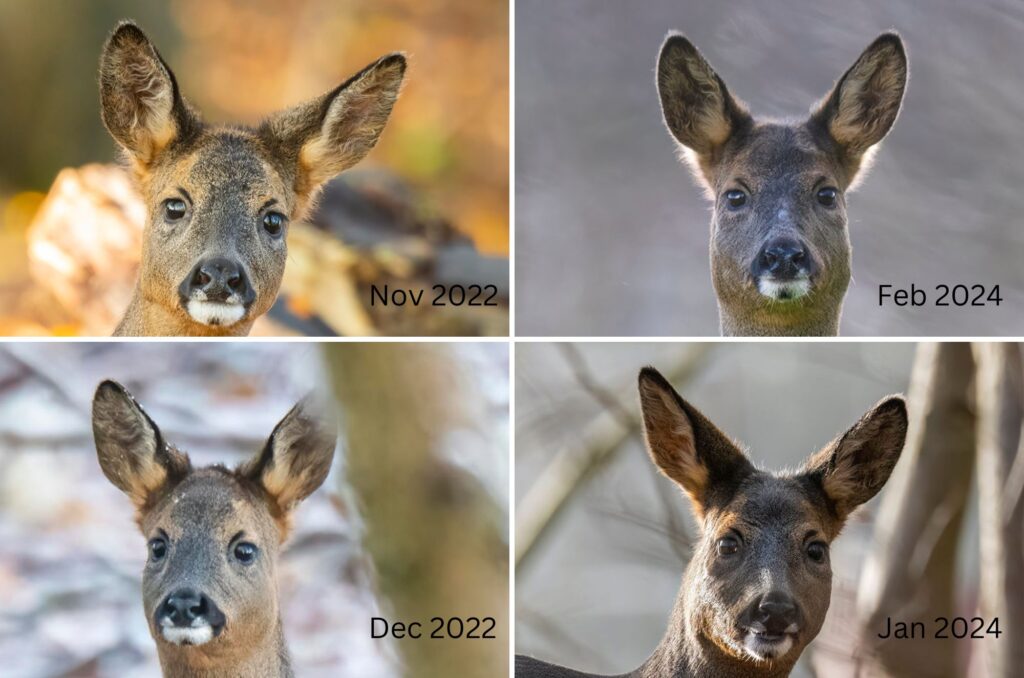
Ruby’s distinguishing features:
- Square-shaped face (like her brother) with black markings that wrap right down past her jawline and a strong black mark on her chin
- Athletic build
- Tolerant personality
- Daughter of Red – born in 2022
Beta
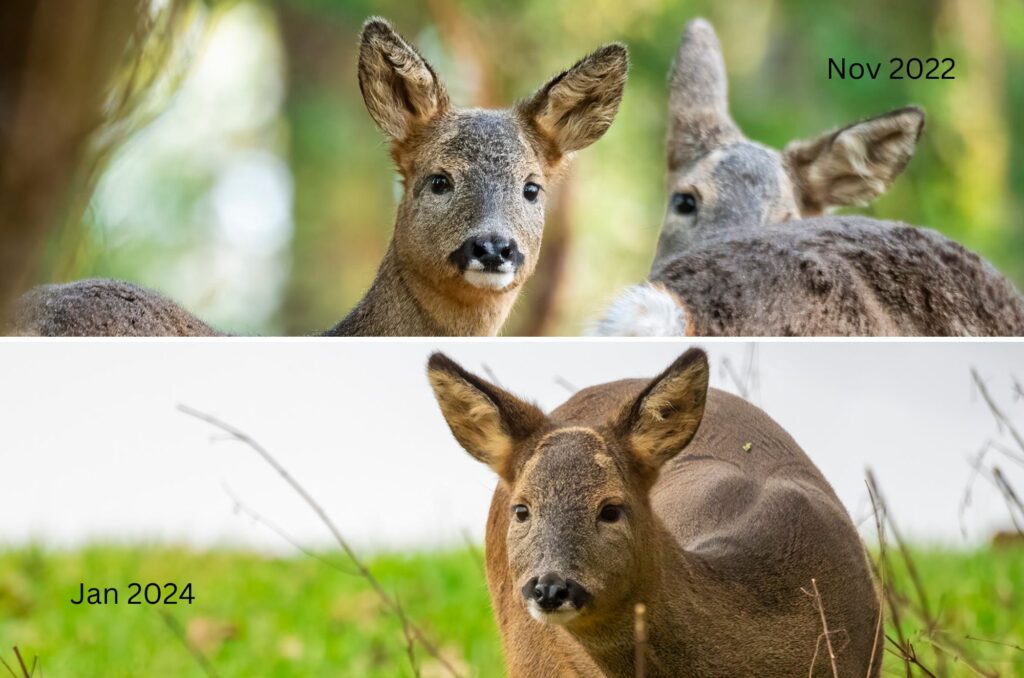
Beta’s distinguishing features:
- Soft, teddy bear face with black markings stopping at her lower jaw and smaller-looking eyes
- Shorter ears
- Athletic build
- Tolerant personality
- Daughter of Blue – born in 2022
Gamma
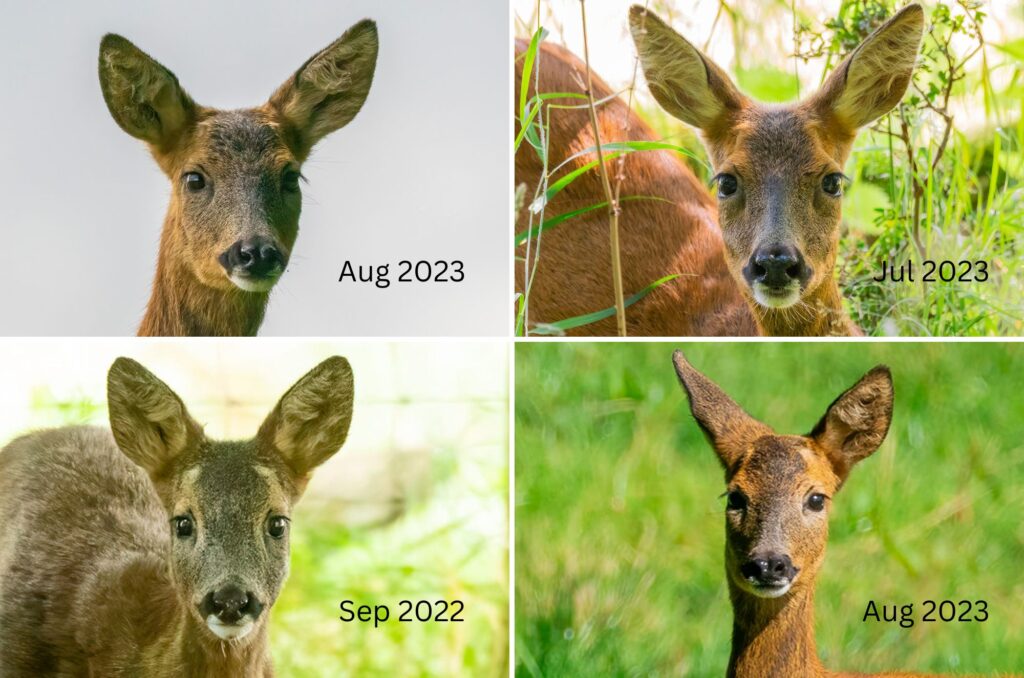
Gamma’s distinguishing features:
- Longer-looking face with more delicate features than her sister, although black markings also stop at her lower jaw
- Larger-looking eyes and longer ears
- Slight build
- Tolerant personality
- Daughter of Blue – born in 2022
Russet, Ruby and Beta are ‘the trio’ that I’m currently photographing regularly. It’s a privilege to continue following their journeys, having watched them since not long after their birth.

